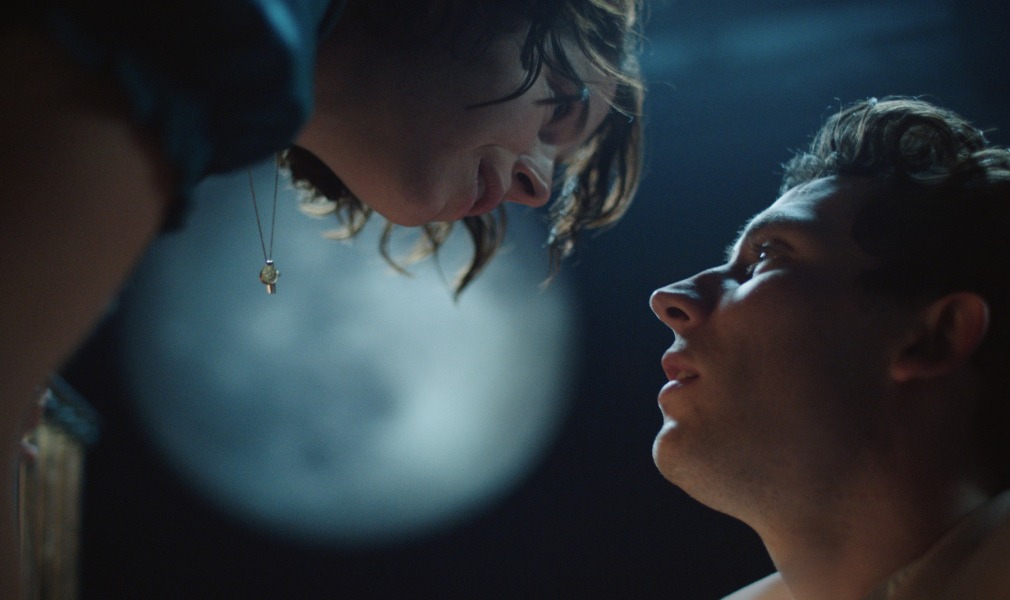
The original plan was for two of the TV and film world’s fastest rising stars to play the title characters in theatrical reimagining of the Shakespeare classic “Romeo and Juliet.” But when 2020 put a stop to the planned Jessie Buckley and Josh O’Connor-led production, the team regrouped and transformed the idea into a filmed stage experience.
“It wasn’t a theater piece, and it wasn’t a film piece. I’ve never been in a situation where from the beginning of rehearsals, the cinematographer is in complete collaboration with you,” Buckley said to the Television Critics Association’s Winter Press Tour on Friday. “Even though the space and the lens and the theatrical space is smaller, the emotional space, especially with this story, is huge. This love is massive.”
As part of a virtual PBS panel, Buckley, O’Connor, and director Simon Godwin explained how the project adjusted and reformed during the pandemic, ending up at a feature-length version of a classic story. The results came from an organic process of trying to keep as much of the original idea as they could.
“Throughout the pandemic, we were in conversations on Zoom like this, about how we can produce Romeo and Juliet,’” O’Connor said. “The thing that was consistent throughout that period was we wanted to fight for the rehearsal process. Even if it is a film, the reason we signed up wasn’t just to stand on the National Theatre stage and speak these words, although that was a big part of it. A large part of it was being in a rehearsal room with these brilliant creatives. And so so we I’m glad we fought for that.”
“Romeo and Juliet” is no stranger to the screen, so as a first-time director in a medium away from the stage, Godwin said he leaned into the inherent sensory qualities of Shakespeare’s text.

“The fact is that Shakespeare writes movies. He writes in highly visual, highly dramatic language. So Shakespeare was also the teacher, as usual, about how we can translate the story on screen,” Godwin said.
Inhabiting these classic characters meant a bit of back-to-basics work for Buckley and O’Connor too, who did plenty of technical breathing and accent work to lock into their respective roles.
“I found it particularly tricky going from the last two years playing someone like Charles [on Netflix’s ‘The Crown’] who’s all constricted in the mouth, and everything’s through the teeth. And suddenly, your mouth is having to do acrobatics that you have forgotten or you haven’t done for a while. That was quite nice, actually, retraining a little bit,” O’Connor said.
That work came through in the play’s pivotal closing death scenes. Filmed at the end of a eight-week schedule, it was an acting challenge that became a massive existential one.
“Almost every day on the sheet, we’d come in and we’d go, ‘Big day. Big emotional day.’ And then you realize, ‘Oh, ‘Romeo and Juliet’ is emotional from beginning to end,’” O’Connor said. “We had to lie on that tomb, Jessie and I, with our eyes closed, and listen to Tamsin Greig, and Lucian [Msamati], and all the company come in and respond to the death of Romeo and Juliet. I remember feeling the intense sadness of that scene. It was really powerful.”
Buckley said that keeping this theatrical tradition alive at a time when so many other productions were put on hold helped to provide a strong sense of collective purpose.
“It was a beautiful marrying of love, but also love of what we were doing,” Buckley said. “We were coming in, and we were being there and we were gonna fight to live out something that we love doing. It was kind of mirroring the story in some way. The feeling in the company of wanting to work and wanting to feel and wanting to be there was such an incredible feeling and really special and something that I’ll remember forever.”
“Romeo and Juliet” is scheduled to air Friday, April 23 on PBS.
ORIGINAL ARTICLE: Indie Wire

FilmmakerLife is proud to be a global team of dedicated professionals who are passionate about the world of filmmaking.